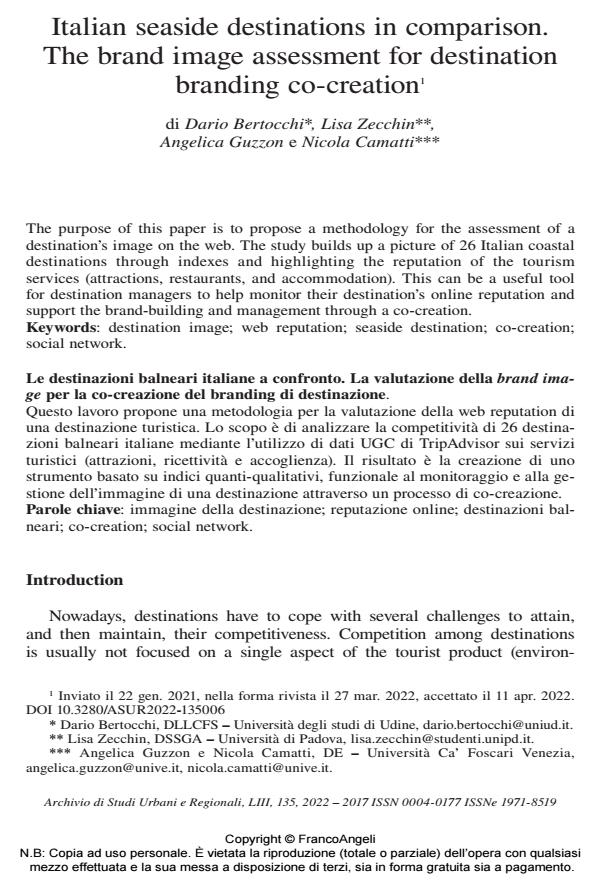Italian seaside destinations in comparison. The brand image assessment for destination branding co-creation
Titolo Rivista ARCHIVIO DI STUDI URBANI E REGIONALI
Autori/Curatori Dario Bertocchi, Lisa Zecchin, Angelica Guzzon, Nicola Camatti
Anno di pubblicazione 2023 Fascicolo 2022/135
Lingua Inglese Numero pagine 26 P. 109-134 Dimensione file 271 KB
DOI 10.3280/ASUR2022-135006
Il DOI è il codice a barre della proprietà intellettuale: per saperne di più
clicca qui
Qui sotto puoi vedere in anteprima la prima pagina di questo articolo.
Se questo articolo ti interessa, lo puoi acquistare (e scaricare in formato pdf) seguendo le facili indicazioni per acquistare il download credit. Acquista Download Credits per scaricare questo Articolo in formato PDF

FrancoAngeli è membro della Publishers International Linking Association, Inc (PILA)associazione indipendente e non profit per facilitare (attraverso i servizi tecnologici implementati da CrossRef.org) l’accesso degli studiosi ai contenuti digitali nelle pubblicazioni professionali e scientifiche
The purpose of this paper is to propose a methodology for the assessment of a destination’s image on the web. The study builds up a picture of 26 Italian coastal destinations through indexes and highlighting the reputation of the tourism services (attractions, restaurants, and accommodation). This can be a useful tool for destination managers to help monitor their destination’s online reputation and support the brand-building and management through a co-creation.
Questo lavoro propone una metodologia per la valutazione della web reputation di una destinazione turistica. Lo scopo è di analizzare la competitività di 26 destina- zioni balneari italiane mediante l’utilizzo di dati UGC di TripAdvisor sui servizi turistici (attrazioni, ricettività e accoglienza). Il risultato è la creazione di uno strumento basato su indici quanti-qualitativi, funzionale al monitoraggio e alla ge- stione dell’immagine di una destinazione attraverso un processo di co-creazione.
Parole chiave:immagine della destinazione; reputazione online; destinazioni bal-neari; co-creation; social network.
Dario Bertocchi, Lisa Zecchin, Angelica Guzzon, Nicola Camatti, Italian seaside destinations in comparison. The brand image assessment for destination branding co-creation in "ARCHIVIO DI STUDI URBANI E REGIONALI" 135/2022, pp 109-134, DOI: 10.3280/ASUR2022-135006